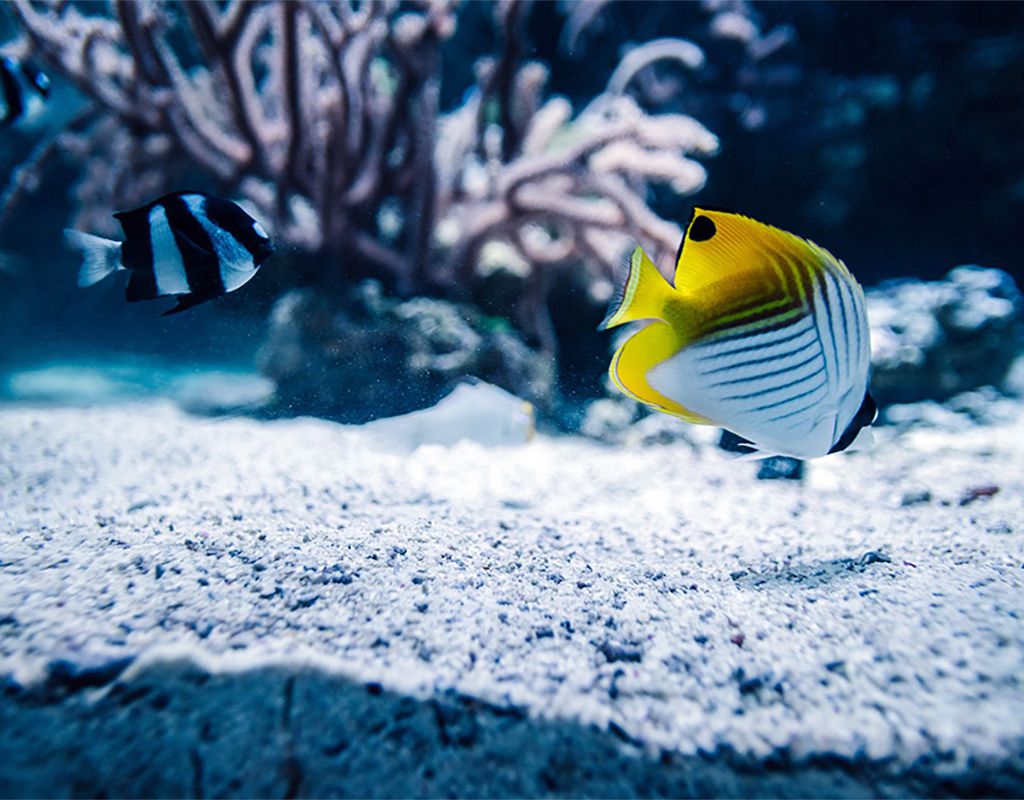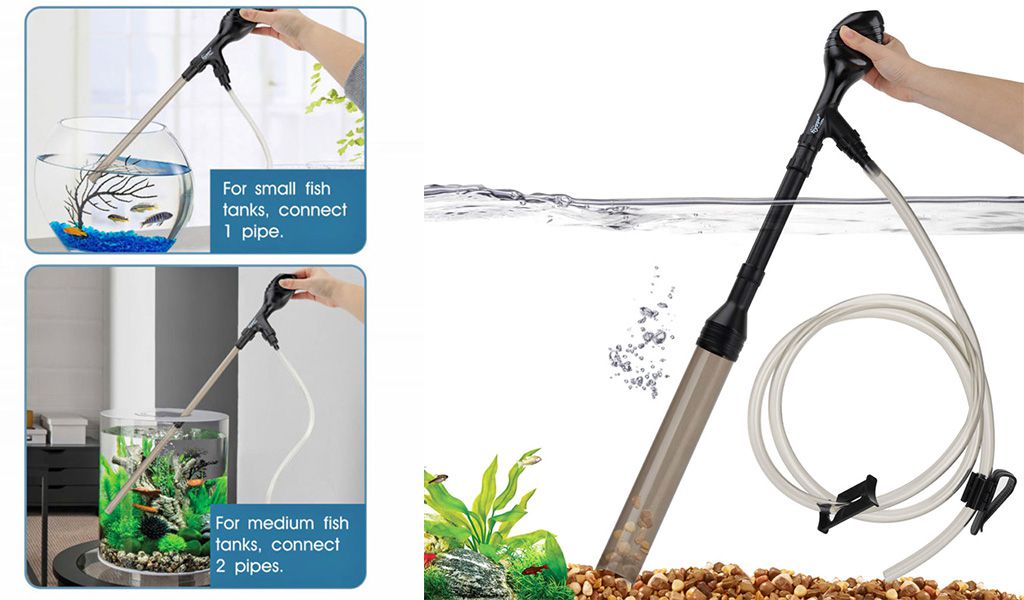How to Clean Sand in a Heavily Planted Aquarium
Sand and gravel can be parts of substrate, but they are two different things. Sand is smaller than gravel, and it is commonly used in planted aquariums and aquascaping tanks. However, the sand would be a little bit hard to clean. In this article, we will give you ideas about aquarium sand and sand cleaning.
Content Table
Aquarium sand
Aquarium sand is an environmentally friendly substrate, and it makes your tank appearance more natural. Nevertheless, diverse aquarium sand can fulfill different tank requirements. Just stay tuned to this segment, let’s learn more about aquarium sand types.
Sea sand: Sea sand is in various sizes and can be found in pet stores. It does a great job in an aquarium. But sea sand is not ideal for tanks with cichlids, comb jellies, and molluscs.
Reef sand: Reef sand is semi-porous, and it helps to absorb bacteria and chemicals. Additionally, reef sand is suitable for aquascaping tanks. But it is not fit for high water usage tanks, like ryukin tanks.
River sand: Generally, it is sand from the river. And river sand is long grain. As time goes by, algae may grow on the river sand. Consequently, you should add biological filtration during spawn seasons.
Black quartz sand: Black quartz sand will not lead to water parameter changes, therefore, you can use it in many aquariums. Furthermore, compared to a white substrate, fish and other creatures in tanks with black quartz sand look brighter.
Play sand: Play sand is cheap and available in most hardware stores. And there are various colors and grain sizes. Play sand is light, thus, it would be sucked into your aquarium filter.
Silica pool sand: Silica pool sand costs more than play sand and blasting sand. Also, the sand possesses many different colors and grain sizes.
Coral sand: Coral sand constitutes limestone fragments of marine organisms, and it is rich in calcium. The sand would increase the water hardness in your aquarium. Hence, it is recommended to use coral sand in saltwater and brackish aquarium.
Live sand: Ideal for saltwater tanks, live sand is one kind of natural reef coral sand. Actually, it is available in aquarium stores. Furthermore, live sand contains beneficial bacteria, which helps to dissolve organic waste, like ammonia, nitrite, and nitrate.

Why it is necessary to clean sand in an aquarium
Is it necessary to clean sand in the aquarium? Exactly, yes, it is essential to do so. And here are some reasons for sand cleaning. Uncleaned sand may contain toxic substances and bacteria, which are harmful to your aquarium, and even lead to health problems for fish and other creatures. Moreover, toxic substances and bacteria accumulation may prevent plants to absorb nutrients and limit plants’ growth. Also, toxic substances and bacteria would harm fish.
In addition to this, aquarium sand would become dirty without daily maintenance and regular cleaning. Because uneaten food, fish feces, and other debris would accumulate in the sand. As a result, the water quality would be poor, which could be a threat to fish health.
Clean aquarium sand
To keep an aquarium clean as well as fish and creatures healthy, you should clean the sand before and after use. Actually, it is quite easy to clean the aquarium sand before use. Just put the aquarium sand in a strainer, and then rinse it with tap water. However, you may need to rinse many times until the water becomes clear. After that, you can add the sand to your aquarium.
After adding the aquarium sand into tanks, there may be a waste, debris, or other substance in the sand, which may be harmful to your tank as it accumulates. Hence, cleaning the sand regularly is essential. Next, we will share how to clean the sand in an aquarium.

Clean the sand with a piece of aquarium equipment
As for partial cleaning, use a gravel cleaner, for example, you can just stir the sand gently and then use a vacuum cleaner to remove the feces, waste, and other debris. On the other side, if you want to clean the sand thoroughly, you can follow the steps mentioned below. First of all, you should remove the fish, other creatures, and live plants from another tank. Then, suck out half of the water in your aquarium. After that, you can clean the sand with a fish tank gravel cleaner.
A gravel cleaner can remove waste, debris, and other impurities from the sand. After cleaning, you can also rinse the sand with fresh water. Next, you can add plants or other things back to your aquarium. Finally, refill the purified water and add fish to the aquarium. Whatever big your tank is, it’s an effective way to clean the substrate sand.
Clean the sand without aquarium equipment
Facing no equipment, you should prepare a bucket or a bowl. Before cleaning, you should remove the fish, plants, and other creatures from another tank. Then, scoop the sand into the bucket. Then stir the sand with your hands, and rinse it until the water is clear. After that, you can put the sand back into your tank, and refill the water. But it is not friendly for large fish tanks.
Conclusion
After reading, have you known more about aquarium sand cleaning? In summary, here are tips about keeping sand in your aquarium clean.
- Choose the ideal sand type for your aquarium
- Rinse the sand before use
- Reintroduce sand to your aquarium
- Keep daily maintenance
- Make sure the water in your tank flows well
- Add sand-cleaning fish or creatures, such as Corydoras catfish, Bristlenose pleco, Hermit crabs, Gobies, and Snails.
That is all for today. Welcome to leave ideas in the comment. Finally, thank you for reading.
